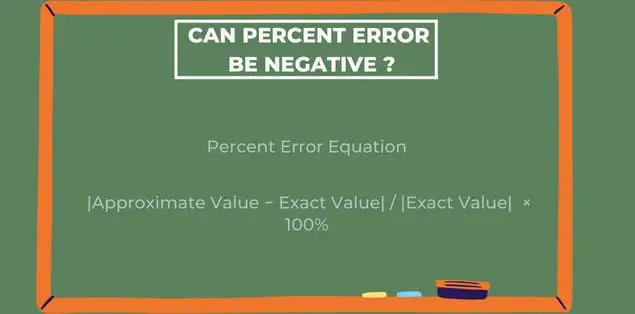So, can percent error be negative? What is an absolute value? A number’s absolute value, which ignores direction, indicates how far it is from zero on the number line. A number can never be negative in absolute terms.
Consider a few illustrations. 5, as well as -5, is 5 in its absolute terms. It takes 5 units to get from 5 to 0 and 0 to -5.
To obtain the percent error, we divide the absolute difference between the measured value and the actual value by the actual value, and multiply the result by 100.
We often calculate it as the absolute difference to reduce misunderstanding brought on by a negative error.
The error is negative when the experimental value is lower than the theoretical value.
To prevent misunderstanding by a negative error, we can frequently display the error as the absolute value of the difference.
The percentage error is negative when the experimental value is higher than the actual value.
We can measure or estimate the accuracy of a prediction using the standard metric known as percent error.
Can a Percent Error Be Negative?
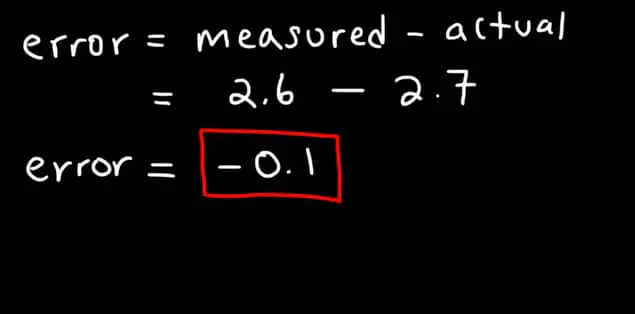
Yes, the percent error can be negative. The conventional approach is to calculate percent error as an absolute value, where it is always positive.
The percentage of error may be negative. We can expect a positive percent error sometimes; however, applications like chemistry commonly have negative percent errors.
Are Percentage Errors Always Positive?
Is percent error always positive? The answer is no!
The absolute difference between an experimental and theoretical value, divided by the theoretical value, is multiplied by 100 to give the percent error.
We can express the error percentage as a positive number in some domains. In others, either a positive or negative value is appropriate. Mostly the absolute terms are taken.
What Happens if I Get a Negative Percent Error?
If the experimental value exceeds the approved value, you will see a negative percent error. The difference between the observed and accepted values, or we can say the difference between the experimental and theoretical values, is an absolute value for computing percent error. As a result, even if you calculate a negative number, it is still positive because it is an absolute value.
The accepted value is sometimes referred to as the theoretical value, while the experimental value is known as the exact value.
Calculating Percent Error
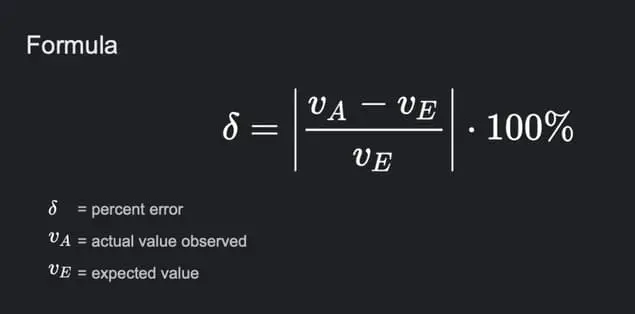
Percent error=|(accepted value)−(experimental value)|/accepted value×100%
Absolute value bars are used in the calculations above to show that the difference between the two values is positive. Also, note that the absolute value of the difference is independent of the relative order of the two numbers.
Can a Percent Error Be Negative in Physics?
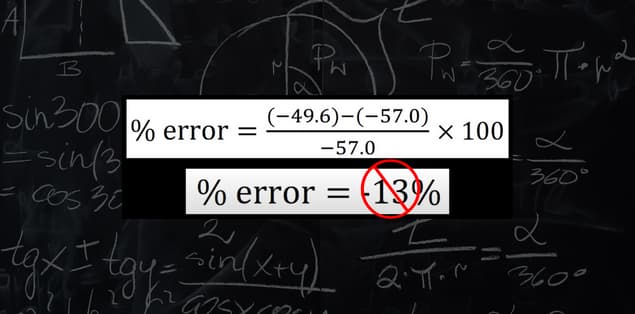
The percent error is negative if the experimental figure obtained is more than the accepted known figure. However, since we must record the final value, only the positive value is taken into account; hence in physics, the percent error cannot be negative.
Can a Percent Error Be Negative in Chemistry?
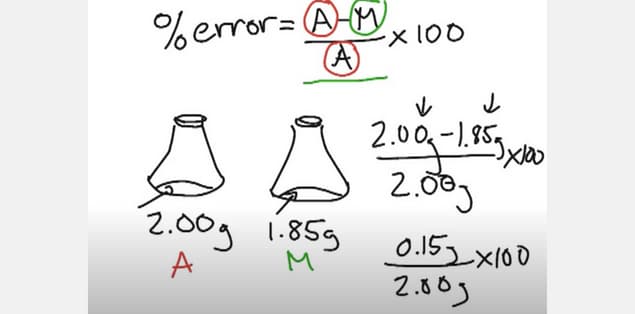
In chemistry, we take the percentage error as negative.
We mainly use it to compute the difference between experimental and real values and calculate the percentage error for lab reports.
For instance, it is unusual that you will receive more product than is theoretically conceivable in studies involving yields in chemical processes.
Final Words – Can Percent Error Be Negative?
We can conclude that the percent error is negative when the experimental value is higher than the accepted value.
The keys to accurately reporting percent error are to know whether to leave the sign (positive or negative) on the computation and say the amount using the appropriate number of significant digits.
